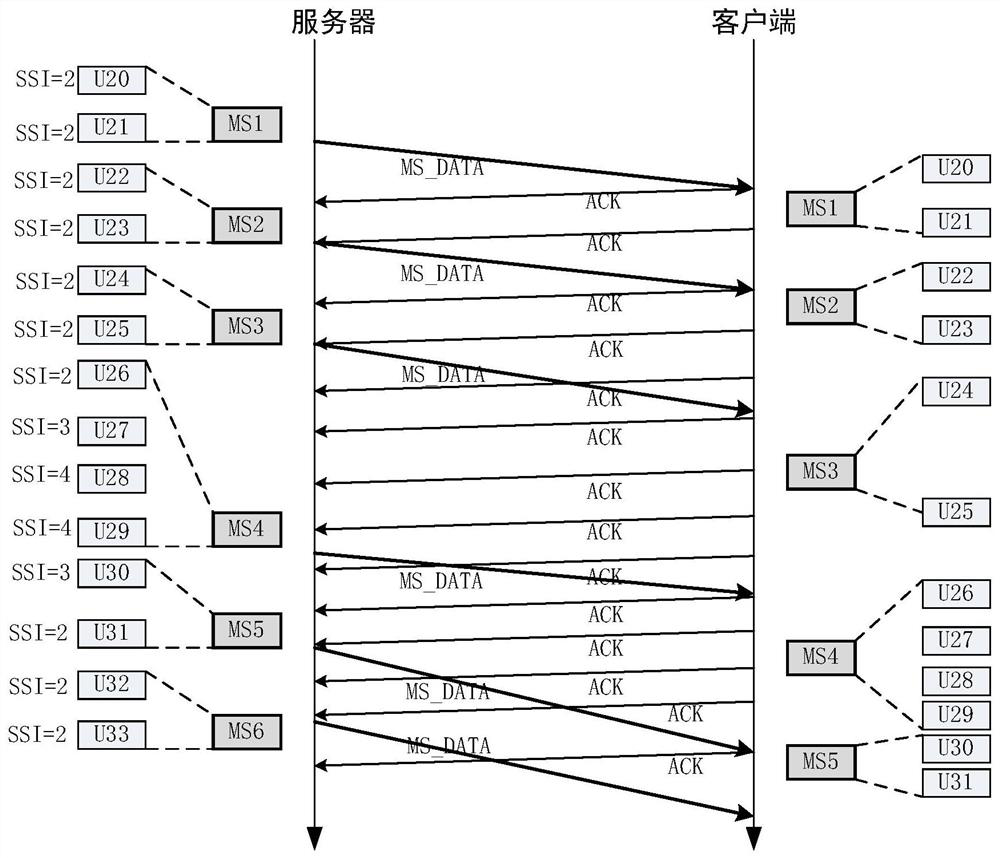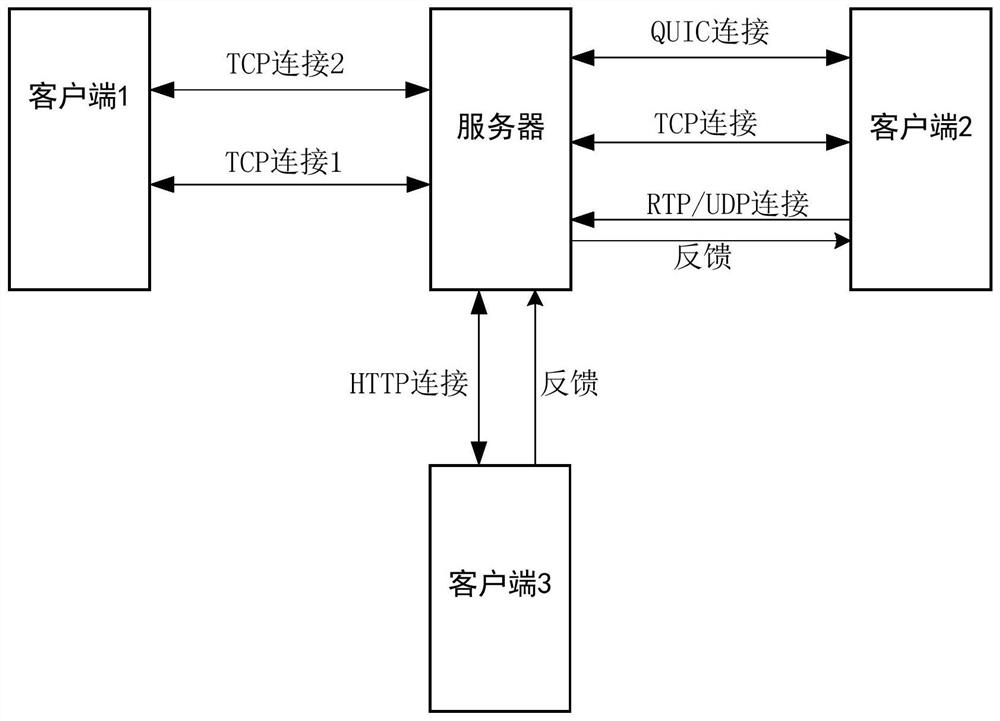Media stream real-time pushing method and server
A push server, media streaming technology, applied in the direction of image communication, selective content distribution, electrical components, etc., can solve the problems of reducing transmission efficiency, single network transmission protocol, cumulative delay, etc., to avoid cumulative delay and improve transmission efficiency effect
- Summary
- Abstract
- Description
- Claims
- Application Information
AI Technical Summary
Problems solved by technology
Method used
Image
Examples
Embodiment 3
[0069] Embodiment 3. In the following embodiment, how the server generates a new media segment according to the feedback from the client and the generation of media units will be described.
[0070] Further, in one embodiment of the present invention, generating a new media segment according to the feedback from the client and the generation of the media unit further includes: whenever a new media unit is generated, judging whether the existing media unit satisfies a predetermined A media segment generation condition is set, wherein, if the preset media segment generation condition is satisfied, some or all of the unsuccessfully sent media units are selected and encapsulated into a new media segment.
[0071] In the embodiment of the present invention, which of the existing media units have been successfully sent and which have not been successfully sent can be obtained through the feedback from the client. Whenever a new media unit is generated, it is checked whether the exis...
Embodiment 4
[0089] Embodiment 4. In the following embodiments, how the server uses various network transmission protocols to transmit media segments will be described.
[0090] Optionally, in an embodiment of the present invention, the preset network transmission protocol is one of the following protocols: RTP, TCP, HTTP and QUIC.
[0091] Specifically, the use of TCP to transmit media segments has been introduced in the foregoing embodiment 1. Here, how to use several other transmission protocols to transmit media segments will be explained respectively.
[0092] When the RTP protocol is used to transmit media segments, the RTP protocol is actually based on the UDP protocol. Therefore, the client should provide an IP address and UDP port number, and the server will establish a one-way UDP connection to the client. Used to send media segments, on the other hand, the server can provide a UDP port number for receiving feedback from the client.
[0093] When the HTTP protocol is used to tra...
Embodiment 5
[0096] Embodiment 5. In the following embodiment, the automatic selection of the network transmission protocol during the transmission of the media segment will be described.
[0097] Wherein, in one embodiment of the present invention, when the preset network transmission protocol includes multiple network transmission protocols, the network transmission protocol is selected according to the feedback from the client and the transmission requirements of the media stream.
[0098] Specifically, when the server and the client agree on two or more network transmission protocols, the server can select the network transmission protocol to use according to the feedback from the client. Generally speaking, the actual transmission bandwidth between the client and the server is time-varying. This is because the Internet is a bandwidth-sharing network, and there are always multiple connections competing for the transmission bandwidth at the same time. Another reason is that the There are ...
PUM
 Login to View More
Login to View More Abstract
Description
Claims
Application Information
 Login to View More
Login to View More - R&D
- Intellectual Property
- Life Sciences
- Materials
- Tech Scout
- Unparalleled Data Quality
- Higher Quality Content
- 60% Fewer Hallucinations
Browse by: Latest US Patents, China's latest patents, Technical Efficacy Thesaurus, Application Domain, Technology Topic, Popular Technical Reports.
© 2025 PatSnap. All rights reserved.Legal|Privacy policy|Modern Slavery Act Transparency Statement|Sitemap|About US| Contact US: help@patsnap.com



